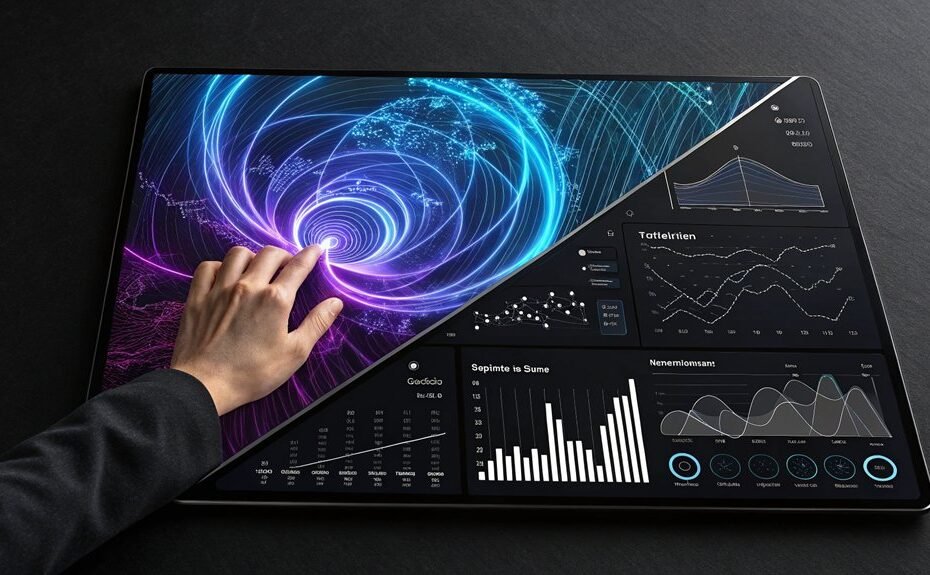By 2025, generative AI and predictive AI will maintain distinct operational roles regardless of increasing integration. Generative AI excels in creating novel content through pattern recognition and extensive unlabeled datasets, while predictive AI specializes in forecasting outcomes using smaller, labeled datasets. Industry applications differ greatly: generative AI dominates creative fields, whereas predictive AI leads in finance and retail forecasting. Core functionalities will remain separate even as hybrid solutions emerge, combining predictive accuracy with generative capabilities. Further technological developments promise improved operational efficiency across sectors.
While artificial intelligence continues to reshape industries globally, the distinct capabilities of generative AI and predictive AI are expected to play increasingly complementary roles by 2025. The fundamental difference between these technologies lies in their primary functions, with generative AI focusing on creating novel content through pattern recognition, while predictive AI specializes in forecasting outcomes based on historical data analysis.
By 2025, generative and predictive AI will merge strengths, combining creative content generation with data-driven forecasting capabilities.
The data requirements for these technologies differ greatly. Generative AI systems typically rely on extensive unlabeled datasets to learn patterns and create new content, whereas predictive AI models achieve peak performance with smaller, labeled datasets. This distinction influences their training processes, with generative AI requiring more substantial computing resources and longer training periods, often utilizing sophisticated techniques like GANs and Large Language Models. Businesses must carefully consider data labeling requirements when choosing between these AI approaches.
Industry applications reveal distinct use cases for each technology. Generative AI has established itself in creative fields, producing art, music, and design content, while predictive AI maintains a strong presence in sectors requiring precise forecasting, such as finance and retail. The time horizon for implementation likewise varies, with predictive AI supporting immediate decision-making processes and generative AI contributing to longer-term strategic initiatives.
The technological environment of 2025 is expected to witness increased integration between these AI types, with businesses leveraging their complementary strengths. Predictive AI's transparency and ability to provide clear forecasting metrics will continue to benefit operational decision-making, while generative AI's capacity for innovation will drive creative content production and design solutions.
Challenges persist for both technologies. Generative AI faces ongoing concerns regarding explainability and the potential for biased or unethical content generation. Predictive AI's effectiveness remains heavily dependent on data quality, with poor input data resulting in unreliable predictions. These limitations are driving continuous technological improvements, with advanced algorithms and improved computing capabilities expected to address current shortcomings.
The industry trajectory suggests a convergence of these technologies by 2025, with businesses implementing hybrid solutions that combine predictive accuracy with generative capabilities. This integration will streamline business processes across sectors, supporting both operational efficiency and creative innovation.
As computing power advances and algorithms become more sophisticated, the distinction between generative and predictive AI may become increasingly fluid, though their core functionalities will continue to serve different business needs.
Most-Asked Questions FAQ
How Will AI Regulation Impact the Development of Generative Versus Predictive AI?
Regulations will impose stricter controls on generative AI because of content creation risks, while predictive AI faces fewer restrictions, focusing primarily on data privacy and accuracy in forecasting.
Can Generative AI and Predictive AI Work Together in Integrated Systems?
Generative AI and predictive AI can effectively integrate, sharing datasets and enhancing capabilities. Combined systems improve prediction accuracy while creating targeted content based on forecasted patterns and insights.
Which AI Type Requires More Computational Resources and Energy Consumption?
Generative AI requires considerably more computational resources and energy consumption, using 7-8 times more power than typical workloads and demanding high-performance GPUs for complex data processing and creation.
How Will Job Markets Adapt to Generative Versus Predictive AI Technologies?
Job markets will adapt through distinct pathways: generative AI creates roles in content creation and customization, while predictive AI drives demand for data analysts and strategic decision-makers.
What Security Risks Are Unique to Each Type of AI?
Generative AI risks include data leakage, automated social engineering, and model poisoning. Predictive AI faces traditional threats like model manipulation and data privacy breaches during analysis and forecasting processes.
